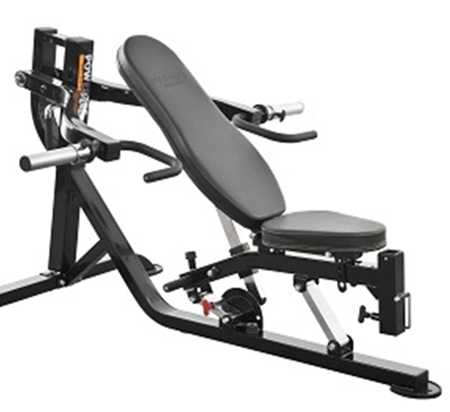Ils parlent de la concentrique , je suis toujours explosif sur la concentrique

Mais moi j'ai lu que sur la négative nous sommes 2-3x plus fort voila qui explique
pourquoi que ca serais mieux de la ralentir.
non il ne parle pas que de la concentrique
another relevant study on lifting tempo took a group of lifters through two different protocols. First, the lifters maxed out using a 2/0/2 tempo - two second concentric, no pause, two second eccentric - which is a pretty normal lifting tempo for most people using moderate to moderately-heavy loads who aren’t trying to change their lifting speed. Then, days later the lifters tested their maxes again but using a 2/0/4 tempo, changing the lowering speed to 4 seconds to accentuate the eccentric action. after determining their 1rms at these specific tempos, they then days later returned to perform amraps with 75% of 1rm after warming up; once using the 2/0/4 tempo and once using the 2/0/2 tempo. what did they find out? well unsurprisingly, on the 1rm tests with a 4 second eccentric they couldn’t lift as heavy. They got more fatigued from going really slow before they pushed it back up. This is a kind of “so what?” outcome, as we previously discussed we know that going very slow (it really is slow, count out loud to 4 seconds using “mississippi’s”) isn’t ideal for strength. But what was more interesting was the effect the tempos had during the amraps on volume, which as we discussed in level 2, is highly relevant for hypertrophy. on the amraps, the slower group performed on average about one and a half repetitions less, to which you might respond “so what, the reps took longer, it was probably the same or even more total work”. well fortunately, they actually measured total work performed. work is the actual physics calculation of volume that takes into account not only the total reps and the load of the bar, but also the distance the bar travels. interestingly enough, the total work was about 10% less in the slower group, which isn’t surprising since they lifted a lighter load. To conclude, the slower tempo forced volume down by compromising load. ironically, by focusing on increasing the total time under tension, this can decrease the total volume and load [5]
après il dit effectivement de ne pas négliger la négative pour autant
now to be fair this is a slight oversimplification. it’s important to point out that letting gravity do the lowering portion of the lift for us is not a true eccentric action. what makes it an eccentric action is that you are in control. This is primarily for those training for hypertrophy. you want to make sure that the eccentric part of the lift is actually a muscle action rather than relaxing and letting gravity drop the load back down.
mais la conclusion c'est bien
To conclude, the biggest debates over tempo are related to time under tension. while time under tension is important, so is the magnitude of tension. so to ensure you are maximizing muscle growth, ensure that gravity is not doing the work for you on the eccentric, and that you’re trying to forcefully accelerate the load on the concentric (Force = mass x acceleration). you want a forceful concentric contraction, and then a controlled eccentric contraction, but not unnecessarily slow.




 ]
]